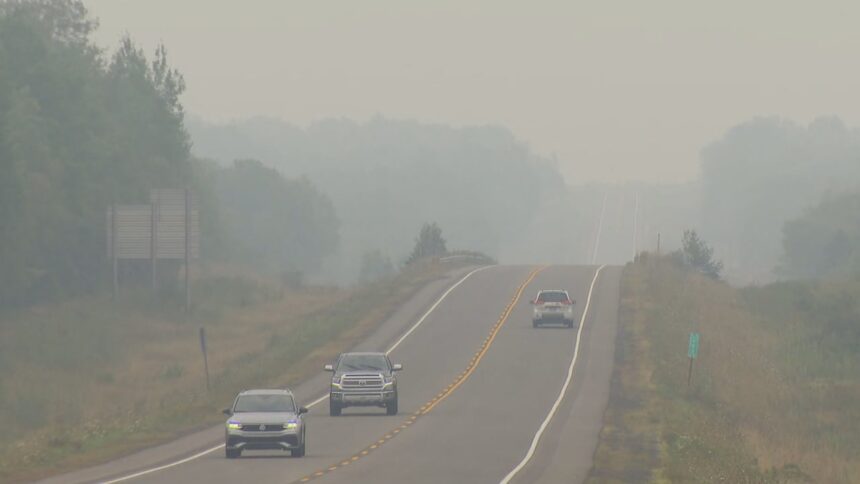The acrid scent of wildfire smoke hangs heavily across vast regions of Canada this week, transforming familiar blue skies into an apocalyptic haze that health officials are calling an unprecedented public health challenge. As massive wildfires continue to ravage forests from British Columbia to Quebec, millions of Canadians find themselves living under air quality advisories, with conditions in some areas deteriorating to levels considered “very high risk” on the Air Quality Health Index.
“We’re witnessing a convergence of climate change impacts in real-time,” says Dr. Michael Brauer, professor of public health at the University of British Columbia. “The scale and intensity of these wildfires, and consequently the smoke exposure across populated areas, represents a serious health emergency that demands immediate attention.”
Health Canada has issued stark warnings about the dangers of prolonged exposure to wildfire smoke, which contains a complex mixture of particulate matter, carbon monoxide, and volatile organic compounds. The fine particulate matter, known as PM2.5, poses the greatest concern as these microscopic particles can penetrate deep into the lungs and enter the bloodstream, potentially triggering or exacerbating a range of health problems.
“What we’re seeing isn’t just discomfort or inconvenience,” explains Dr. Sarah Thompson, respirologist at Toronto General Hospital. “These conditions can cause immediate symptoms like burning eyes, sore throat, and difficulty breathing, but also pose significant risks for vulnerable populations including children, the elderly, pregnant women, and those with pre-existing cardiovascular or respiratory conditions.”
In regions closest to active fires, particulate matter readings have exceeded 300 micrograms per cubic meter—more than 25 times the World Health Organization’s recommended 24-hour exposure limit. Even in cities hundreds of kilometers from active blazes, readings consistently register in the “high risk” category, prompting officials to advise residents to limit outdoor activities and keep windows closed.
The Canadian government has mobilized additional resources to address the growing crisis, including deploying medical personnel to communities experiencing severe smoke impacts. Meanwhile, portable air quality monitoring stations have been established in numerous locations to provide real-time data on pollution levels.
“This isn’t just a temporary inconvenience,” warns Dr. Theresa Tam, Canada’s Chief Public Health Officer. “We’re looking at potential long-term health consequences for communities experiencing prolonged smoke exposure, particularly when such events become more frequent due to climate change.”
The economic impact of the wildfire smoke crisis extends beyond healthcare concerns. Tourism operators report significant cancellations, outdoor sporting events have been postponed, and many businesses have implemented modified operations to protect workers. Schools across affected regions have cancelled outdoor activities and some have temporarily shifted to remote learning to minimize children’s exposure.
Climate scientists point to the intensifying wildfire seasons as evidence of accelerating climate change impacts across Canada. The country has experienced a dramatic increase in both the number and intensity of wildfires over the past decade, with the current season already breaking records for total area burned.
“What we’re experiencing represents the new normal under climate change,” notes Dr. Mike Flannigan, Director of the Canadian Partnership for Wildland Fire Science. “The combination of higher temperatures, changing precipitation patterns, and increased lightning activity creates ideal conditions for more frequent and intense wildfire seasons.”
For Canadians living under these smoke-filled skies, practical protective measures have become essential. Health officials recommend staying indoors with windows closed when possible, using portable air purifiers with HEPA filters, and wearing N95 masks when venturing outside during poor air quality periods.
As communities across the country grapple with this increasingly common climate disaster, many Canadians are asking a sobering question: In a warming world where wildfire seasons grow longer and more intense each year, will clear summer skies become a luxury of the past?
For continuing coverage of Canada’s wildfire situation and air quality updates, visit CO24 Canada News.










